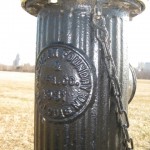Richard Wolff has been a professor of economics at the University of Massachusetts since 1981. Media Education Foundation has just released a new video of Wolff, offering his opinions on the current economic crisis. Here's the trailer, which offers some dramatic motion-graphs illustrating wage stagnation versus productivity in America. Here's the blurb from MEF:
Professor Richard Wolff breaks down the root causes of today's economic crisis, showing how it was decades in the making and in fact reflects seismic failures within the structures of American-style capitalism itself. Wolff traces the source of the economic crisis to the 1970s, when wages began to stagnate and American workers were forced into a dysfunctional spiral of borrowing and debt that ultimately exploded in the mortgage meltdown. By placing the crisis within this larger historical and systemic frame, Wolff argues convincingly that the proposed government bailouts, stimulus packages, and calls for increased market regulation will not be enough to address the real causes of the crisis, in the end suggesting that far more fundamental change will be necessary to avoid future catastrophes.
I haven't viewed the entire video, only the trailer, but even the trailer presents important context for our current economic crisis.
I do hope that, in the full video, Wolff puts blame not only on the profit-makers but also on American consumers, who have clearly made quite a few terrible decisions in their attempts to live beyond their means. Not
all of that accrued individual debt was for the purpose of buying essentials such as food, housing and health care. There is a LOT of blame to go around: my targets include the greedy and corrupt financial sector
and many irresponsible consumers. Not that all businesses are greedy, nor all consumers irresponsible.
With this caveat, though, I did want to link to this video trailer because the graphs are mind-blowing. Further, MEF has put out terrific videos that offer clarity regarding many of our country's most contentious issues. One example is the MEF production,
War Made Easy.

